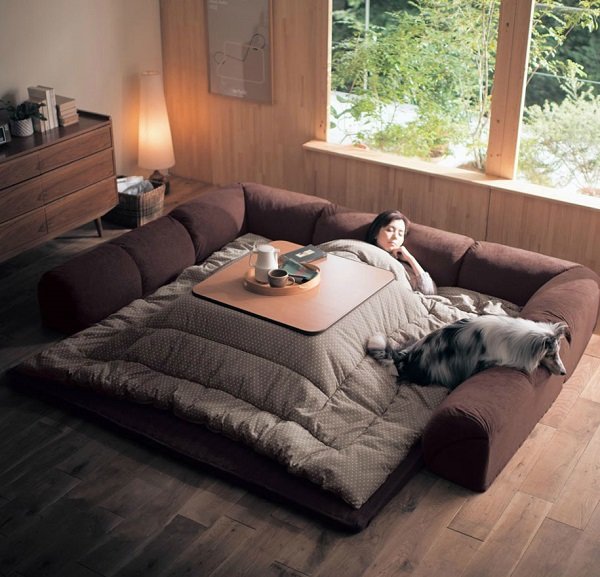Korsi: pleasant warmth for family gathering

TEHRAN -- Not a long time ago, korsi was found in nearly all Iranian houses during cold seasons. With the change of lifestyle, korsi is not a houseware anymore these days.
In modern houses, television set is a counterfeit replacement for this lovely piece of furniture as they both gather people around.
However, there is a distinct difference between korsi, which gather family members together to socialize and TV set, which fully and destructively attracts family members’ attention and stop them from interacting with each other.
However Korsi was not a mere heater in Persian culture. Its pleasant warmth, brought all the family together. They ate winter goodies and listened to each other. During nights, grandparents told stories and narrations while all families sat at korsi.
What is korsi?
It is a 50 centimeter high our-legged table with a heater underneath it, and blankets and comforters thrown around it.
They decorate it with a piece of jajim or kilim. Some cushions and poshti (a kind of cushion lean against the wall) are put around korsi.
In the past, the heating source was a fire pan in which, the coals are put when fired. Families with lower income made a hole beneath Korsi and put the coals in that. They used the fire as the stove for making dishes like Abgusht as well.

Korsi, heart of Persian homes
However Korsi was not a mere heater in Persian culture. Its pleasant warmth, brought all the family together. They ate winter goodies and listened to each other. During nights, grandparents told stories and narrations while all families sat at korsi.
Korsi had a crucial part during Yalda celebration, which falls on December 20.
The auspicious yet thousands-year-old occasion, known as the longest and darkest night of the year, marks the last eve of autumn and the beginning of winter.
The place of sitting for each member of family varied according to his or her age. Most of the time the elder member of family sat on the top of room, with the most distance from door while children sat near door.
In affluent families, there were two korsis, one in the living room and another in a room for guests.
According to Iranian traditional medicine, Korsi is beneficial for anemia. Lying your feet beneath Korsi improve your blood circulation which is beneficial for health.
While your body get warm gradually especially the lower part, it has a great influence on your knees and discs.

Korsi in modern time
Korsi still can be an item of furniture in modern houses, which creates a cozy place for family gathering.
In Japan, they design new models for kotatsu, a kind of traditional Japanese table similar to korsi.
Since many buildings in Japan lack insulation and rooms are heated separately, kotatsu acts as a handy centralized heat source when it’s chilly.
Korsi and kotatsu are the means for family gatherings and face to face talks, invaluable connections, which are important regardless of time and place.
We can be proud of some parts of past time in museums but some parts are our heritage, which is useful today. Bring back charm of past, with what we inherited from our wise ancestor to our life.
SB/MQ/MG
Leave a Comment